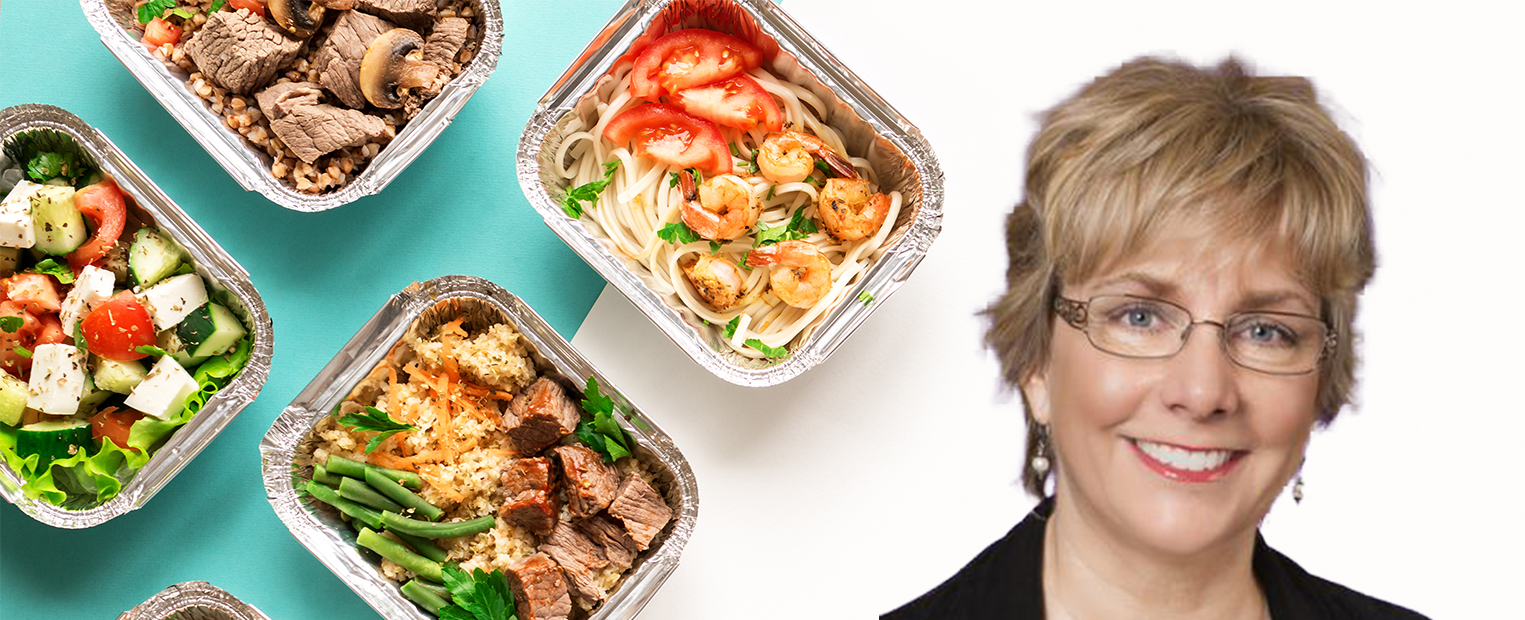Modern-day meals delivered right to your doorstep are a far cry from the Swanson and Hungry-Man trays of yesteryear. Offering dinners catered to vegan, keto, and low-calorie diets, prepared meals continue to soar in popularity. But just how nutritious are they? Anne VanBeber, Nutritional Sciences professor, gives her expert opinion on modern eating habits for those concerned with quick and easy meal prep.
Buying fresh is something that has been strongly suggested for years. Is frozen food bad for you?
Frozen foods are not bad for you. Many types of foods are frozen. Vegetables are frozen, and vegetables eaten this way are often the most nutritious. Most frozen vegetables do not have salt or fat added, unless you buy the ones with the sauces. You can read the label to see if it is just pure vegetables. When vegetables are frozen, they are frozen very quickly after picking or harvesting, so their nutrition has not gone down from sitting or traveling. They also have a great color, so that makes them appetizing also. Frozen vegetables are an excellent food to have in your freezer for quick meals. They can be steamed quickly for an easy side dish. They are easy to use in recipes. They can be used to extend a recipe so it will feed more people. Fruit is also frozen. Some fruit does have added sugar when frozen, but many fruits do not. You just need to read the package labeling to find out if there is added sugar.
What about the pre-packed dinners you find in the frozen foods aisle?
When it comes to frozen dinners, they are often loaded with sodium and fat. Adding salt to frozen dinners is commonly done in the food industry to add flavor. There are brands that have less sodium and fat though, such as Healthy Choice, Lean Cuisine, and Smart Ones. Look for frozen dinners with 500-600 mg of sodium or less. Some of these brands mentioned might have a lower sodium content but be high in fat, and vice versa. Try to find dinners with less than five grams of fat, preferably three grams or less. Dinners with chicken or turkey breast, fish that is not fried, shrimp are dinners that could have less fat. Frozen dinners are something quick for a busy person or family. With some label reading, someone could find a dinner that is healthy. Also look for dinners that have lots of vegetables or whole grains such as rice or quinoa in addition to the meat.
What improvements have you noticed in prepared meals that set them apart from the TV dinners of the 1950s?
TV dinners today are much different from the ones in the ’50s and ’60s. There was not a lot of variety in the vegetables used in TV dinners when they first appeared. There were a lot of dinners with mashed potatoes and peas. Now there are dinners with broccoli, cauliflower, carrots, cabbage, and greens. There is more fiber in some of the dinners today also. The TV dinners in the 50s and 60s also came in foil containers that had to be put in the oven to cook. They were not really "convenient" because they still took about 30 minutes to get hot. Today's dinners can be heated within a few minutes in the microwave oven.
How can meal prep/meal planning positively impact a person’s diet?
Meal planning/meal prepping on the weekends or whenever you have some time can absolutely help someone eat healthier. I have found that when I do not plan or have something prepared, I will eat more snack type foods for a meal at work. If I will plan my lunches the day before and even prep something the night before, then I can easily have a nice flavorful healthy lunch at work and not get hangry. The same can be said for meal prepping for dinners. I think one of the best things to do is to prepare a food or dish that can be used two or three times during the week. You can have a roasted chicken one night with vegetables and other sides. Then you can use the leftovers of the chicken for soup, tacos, sandwiches, or chicken spaghetti. I know people who will prep several of the same meals to eat for 4-5 days for either lunch or dinner. You can buy inexpensive containers to reuse for this purpose. While on the topic of meal prep, I have to put in a plug for canned beans. They can be easily incorporated into a meal just by opening the can and rinsing. They are good room temperature, cold, or warm. Legumes such as black beans, chickpeas, pinto beans, kidney beans, lentils are so full of vitamins, minerals, fiber, and protein. They are inexpensive and can extend any meal. They are a great side dish or incorporated into an entree.
For busy folks who want heat-and-eat convenience, what do you suggest?
I am often asked what I think of the meal-prep delivery companies such as Hello Fresh or Blue Apron, and I think those are wonderful options for people who don't have much experience in the kitchen or don't want to spend the time doing the pre-prep. Using these services allows people to have a freshly cooked meal without much effort. There are various options regarding vegetarian, vegan, keto, lower sodium, gluten free, etc. Honestly, I think for heat-and-eat convenience, you can also buy the rotisserie chicken, open a can of beans, open the bag of spinach, and you have a meal. You can also utilize the parboiled rice packages that take just minutes to boil in the bag. There is a brown rice option that would give you a whole grain. This would be a meal that is not processed. It contains real whole food, which is what our bodies need.
